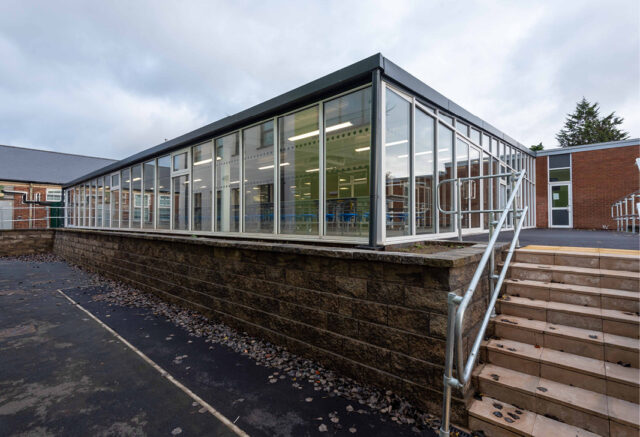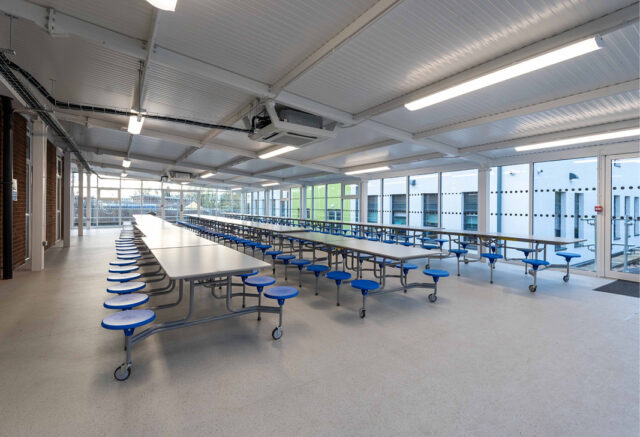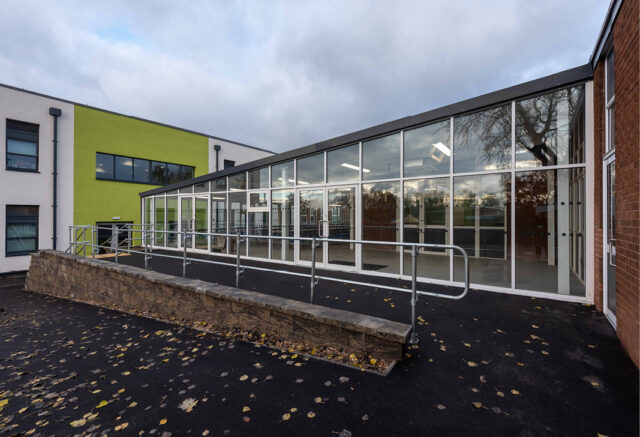In their report on the condition of school buildings, The National Audit Office notes that following years of underinvestment, the school estate’s overall condition is declining across the UK and around 700,000 pupils are learning in a school that is believed to require major rebuilding or refurbishment.
Schools desperately need more space and better facilities but their budgets are already stretched and as such, some schools remain cold, leaky and crumbling. A BBC Panorama investigation uncovered headteachers walking their sites with buckets for rainwater pouring through rooves and pupils working in mobile blocks from the 1960s, so cold that they need to wear gloves inside.
For schools considering much-needed building work, budget is undeniably one of the leading factors in any decision making. Spiralling costs and long, drawn out programmes that come with traditional construction process instil a sense of dread among educational professionals, but a design-build process might just be the solution.
Traditional construction costing: spiralling and sky-high…
When planning a construction project, schools must consider budgeting, value and quality. For budget-conscious MATs and school business managers, competitive tendering can seem like the obvious choice, but it can unravel quickly and school building projects become vulnerable to soaring prices and spiralling programs. What begins as a low-cost promise can quickly lead to unexpected change orders, delays and disputes that stretch both budgets and timelines.
In today’s funding landscape, schools cannot afford financial grey areas. With capital budgets under pressure and urgent demand for new spaces, cost control needs to be built into the process from day one of any building project, not left to chance.
This is where the delivery model makes a fundamental difference.
Design-build for greater financial control
In the traditional model, schools appoint an architect to develop designs and tender for a contractor. The contractor only becomes involved once plans are finalised, meaning that key budget decisions are made without full visibility of the build. It can be a fragmented process that leaves room for scope gaps, misaligned expectations and late-stage surprises.
In contrast, design-build turns that process on its head. From the earliest design stage, the same team responsible for delivery is also responsible for the budget. This joined-up approach means that:
-
- Budgets are based on real construction insight, not estimates
- Scope is aligned early, reducing the risk of missing or unclear items
- Value engineering is proactive, not reactive
The traditional tender route encourages bidders to offer the lowest possible price in order to win the building work for the project. However, the number offered often only covers part of the picture and once works are underway, contractors can introduce variations or identify exclusions that weren’t accounted for; adding cost, extending timelines and creating tension for schools who simply cannot extend their already straining budgets.
Again, with design-build, the process is very different. The team delivering the work is the same team who scoped and priced it, which means that costs are more accurate, better planned and less prone to change. With a design-build model, schools are working with a single contract, a single accountable team with no incentive to be anything other than upfront.
Unexpected change orders are one of the biggest causes of budget overrun in school projects. For example, something seemingly insignificant such as an overlooked groundworks issue or a last-minute redesign, amounts to extra cost, disruption to programme and mounting frustration.
Design-build significantly reduces the need for change orders. With integrated design and construction, there’s better coordination, fewer gaps and tighter control over what gets delivered. As such, costs are clearer, more predictable and easier to manage.
ZONE Design. Build
At ZONE, we understand the financial pressures schools are under. That’s why our design-build model is built specifically around education-sector needs, with cost certainty, clear timelines and practical outcomes at its core.
We work differently from traditional contractors. From the very first stage, we offer zero up-front design fees, so schools can explore viable solutions without committing capital before they’ve seen a deliverable, costed plan. Our approach combines detailed cost planning with concept design, ensuring budgets are accurate and professionally informed from day one.
By integrating design and construction under one roof, we eliminate the gaps that cause overspend and delay. The same team that scopes your project is the team that delivers it, meaning no hidden surprises and full accountability at every stage.
Our build system uses off-site manufacturing techniques for key elements, delivering even greater programme and budget control. This reduces disruption to the school site, shortens contract duration and minimises the risks typically associated with traditional construction.
Our team brings deep experience in education projects, from small scale refurbishments to new build classrooms and specialist teaching blocks. We know what matters most to headteachers, MATs and school business managers: true value, reliability and minimal disruption.
For schools looking to move forward with confidence; controlling cost, cutting complexity and reducing risk, ZONE offers a smarter, simpler way to build.
Find out more at: zonedesignbuild.co.uk




